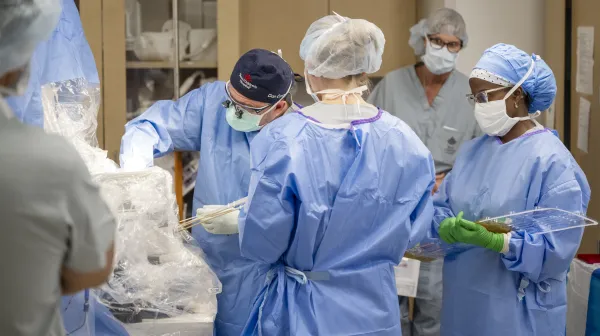Topics
MicroRNA helps unravel the mystery of the Rett protein, MeCP2

A snippet of genetic material called microRNA provides new insight into the control of the protein MeCP2, which causes disease when there is too much or too little of it in the brain, said researchers at Baylor College of Medicine and the Jan and Dan Duncan Neurological Research Institute at Texas Children’s Hospital in a report in the journal Genes and Development.
"We know that MeCP2 is important for neurological function," said Dr. Huda Zoghbi, director of the NRI and professor of molecular and human genetics at BCM. "We also know that precise control of the levels of MeCP2 in the brain is crucial to neurological function."
Zoghbi first found the gene for the protein in 1999, identifying mutations in the gene MECP2 as the cause of Rett syndrome, a post natal genetic disorder that affects mainly girls and occurs when there is too little of the protein.
In this report, Zoghbi, who is also a Howard Hughes Medical Institute investigator, and her colleagues describe a microRNA known as miR-483-5p that plays an important role in regulating the levels of MeCP2 protein in the fetal brain during development. Such microRNAs are known to affect the ability of messenger RNA (a form of genetic material) to convey the blueprint for a protein from the DNA in the nucleus to the protein-making machinery of the cell. It accomplishes this control through interaction with the 3’ untranslated region (3’UTR) that flanks one side of a gene.
High levels of the microRNA (miR-483-5p) mean low levels of MeCP2, which is the state that exists in the fetal brain, said Dr. Vincenzo Gennarino, a postdoctoral associate in the Zoghbi lab. Vincenzo found that this particular microRNA interacts with the long 3’UTR found in fetal brains but not the shorter 3’UTR that is found in the brain after birth.
"Surprisingly, we have found that the binding site of miR-483-5p to the gene MECP2 is specific to humans," said Dr. Kihoon Han, a postdoctoral associate in the Zoghbi lab. They also found that the microRNA regulates levels of two proteins that interact with MeCP2, which further enhances its level of control.
"More broadly, miR-483-5p-mediated regulation of the levels of MeCP2 and some of its interacting proteins uncover an interesting example of a regulatory posttranscriptional (between the transcription of DNA to messenger RNA and the transport of that message to protein-making machinery of the cell) control of a group of genes that are functionally associated through a specific microRNA. The odds are this regulatory mechanism involves many other genes that function together and/or that express 3’UTRs in a developmental or tissue specific pattern," said Zoghbi.





